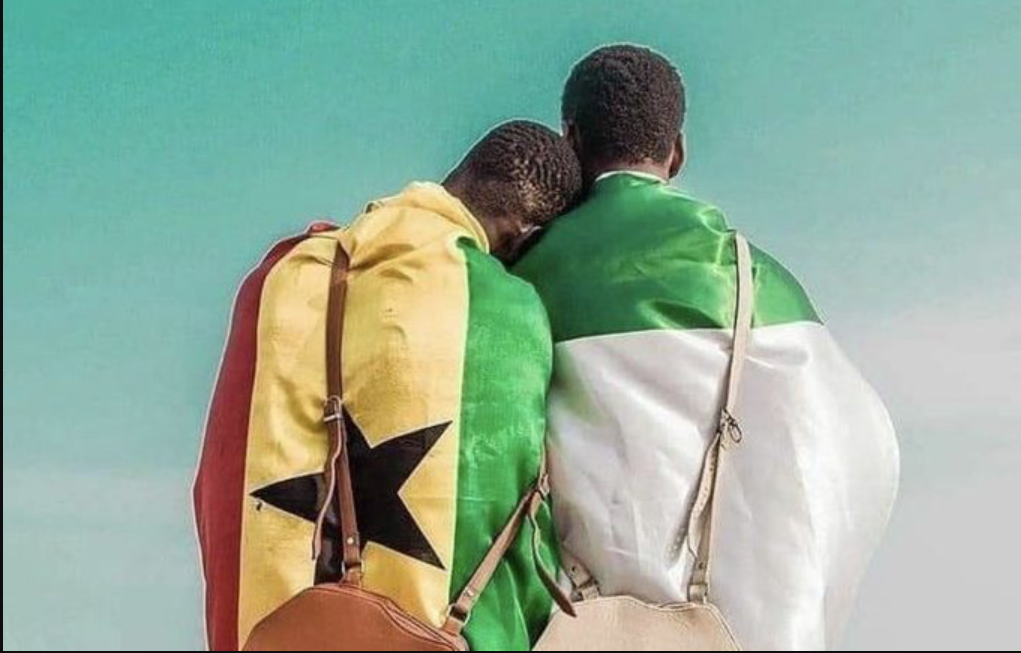
A recent chat between Ghanaian musician King Promise and Nigerian content creator Peller has reignited one of West Africa’s favourite debates — Ghana versus Lagos. King Promise’s claim that “the whole of Ghana is not bigger than Lagos” has set social media ablaze, sparking arguments over geography, pride, and perception.
The award-winning musician said:
The whole of Ghana is not bigger than Lagos. Lagos is bigger than the whole of Ghana. And it’s not even the capital of Nigeria.
READ MORE: King Promise faces backlash after claiming Lagos is bigger than the whole of Ghana
How True Is King Promise’s claim?
This article examines whether Lagos truly surpasses Ghana in size, exploring the statistical evidence and unpacking the reasons behind this persistent misconception.
“The whole of Ghana is not bigger than Lagos. Lagos is bigger than the whole of Ghana. Ghana is 24 million people.” – Ghanaian singer King Promise educates Nigerian Streamer Peller pic.twitter.com/qWbXyeNnHg
— EDHUB🌍ℹ (@eddie_wrt) October 20, 2025
The Verdict: Geographically Inaccurate
When measured by land mass, the claim fails scrutiny entirely. The confusion typically stems from conflating distinct measurements: territorial area, demographic figures, population concentration, and financial productivity. Each metric tells a different story.
Ghana encompasses roughly 238,540 square kilometres (92,101 square miles), rendering it comparable in size to the United Kingdom. Excluding aquatic features, the nation’s terrestrial area measures approximately 227,533 square kilometres.
READ MORE: People are fighting over my brother’s money, property without knowing how he died – Lumba’s sister
Consider these proportions: Ghana’s north-south axis extends roughly 670 kilometres from Cape Three Points on its southern coastline to its northern boundaries, whilst spanning approximately 297 kilometres east to west. The nation shares frontiers with Togo eastward, Côte d’Ivoire westward, Burkina Faso northward, and the Atlantic Ocean southward.
Lagos State occupies 3,577 square kilometres, establishing it as Nigeria’s smallest administrative region despite possessing the highest population concentration. Alternative sources occasionally cite 1,292 square miles (3,345 square kilometres), though official records predominantly reference the larger figure.
Crucially, water features, lagoons, tributaries, and coastal channels, constitute 22% of Lagos State’s total territory, further diminishing the actual terrestrial space available.
READ MORE: Akosua Serwaa’s lawyer blames Daddy Lumba’s family head for ongoing funeral dispute
The designation “Greater Metropolitan Lagos” or “Lagos Megacity Region” encompasses an additional continuously developed area of 1,535.4 square kilometres (592.8 square miles), extending into neighbouring Ogun State.
Combining these figures:
Lagos State: 3,577 sq km
Greater Metropolitan extension: 1,535.4 sq km
Combined total: approximately 5,112 sq km
This aggregate represents merely 2.1% of Ghana’s total territory.
The Indisputable Mathematics
READ MORE: Daddy Lumba’s funeral faces further delay as court adjourns Akosua Serwaa’s injunction case
The numbers speak unambiguously:
Ghana: 238,540 square kilometres
Lagos State: 3,577 square kilometres
Ghana exceeds Lagos State by approximately 66.7 times in territorial extent. Even incorporating the entire Greater Lagos Metropolitan Region (roughly 5,112 sq km), Ghana remains approximately 46.6 times larger.
Put simply: Lagos State could theoretically fit within Ghana’s borders approximately 67 times, with considerable space remaining.
Understanding the Misconception
READ MORE: Regina Daniels’ husband reacts to wife beating allegation, accuses her of drug abuse
Several interconnected factors perpetuate this geographical confusion:
1. Demographic Ambiguity
Population figures present Lagos’s most legitimate claim to comparability with Ghana.
Census.gov data indicates Ghana’s population at 35.3 million, whilst Lagos records 17.2 million inhabitants. However, Lagos’s demographic statistics remain contentious.
The 2006 federal census suggested the conurbation housed approximately 9 million residents, though Lagos State authorities disputed this figure, publishing alternative data placing the Lagos Metropolitan Area population at roughly 16 million. By 2022, estimates for greater Lagos approached 28 million.
READ MORE: Daddy Lumba’s children distance themselves from legal dispute over his death
Should the higher projections (25–28 million) prove accurate, Lagos might indeed possess comparable demographic weight to Ghana’s 35.3 million, though this concerns population rather than geographical magnitude.
Social media respondents swiftly corrected the record: “Lagos isn’t bigger than Ghana geographically, it’s more populated than Ghana, I mean Lagos population is more than that of the whole Ghana” and “Somebody tell King Promise that population size and land size are different; we don’t determine the size of a place by its population.”
2. Population Concentration
Lagos maintains a population density of approximately 4,907 persons per square kilometre, potentially reaching 20,000 persons per square kilometre in the metropolis’s most concentrated districts.
READ MORE: 10 Best Horror Movies to Kick Off Your Halloween Season
Conversely, Ghana’s overall population density measures considerably lower at roughly 121–313 persons per square kilometre, varying by calculation methodology.
This dramatic disparity creates an impression of Lagos being “larger” because:
Inhabitants occupy far less space per capita
The constructed environment exhibits greater intensity and continuity
Traffic congestion and urban expansion create a perception of endlessness
Lagos’s energy and activity overwhelm most Ghanaian urban centres